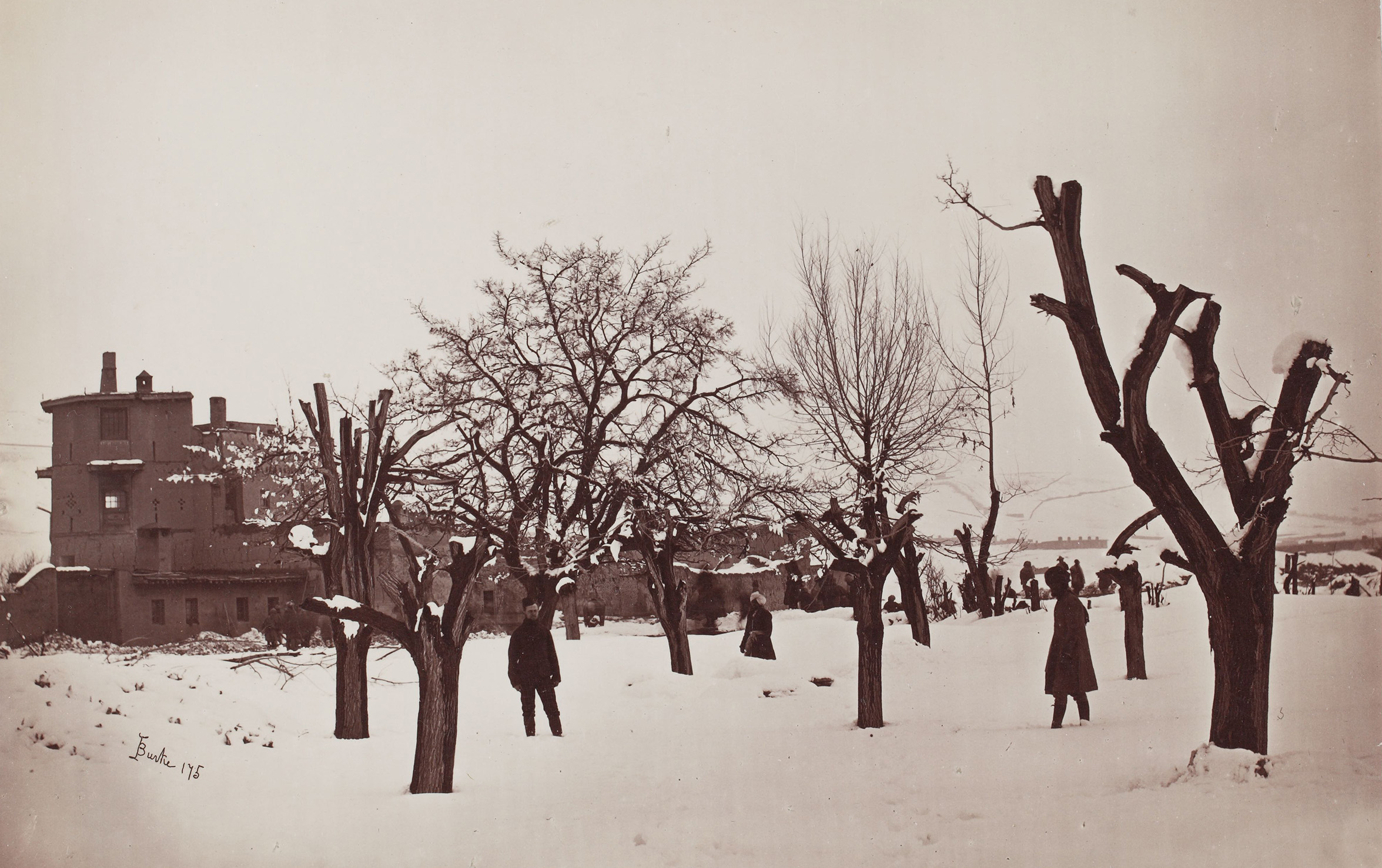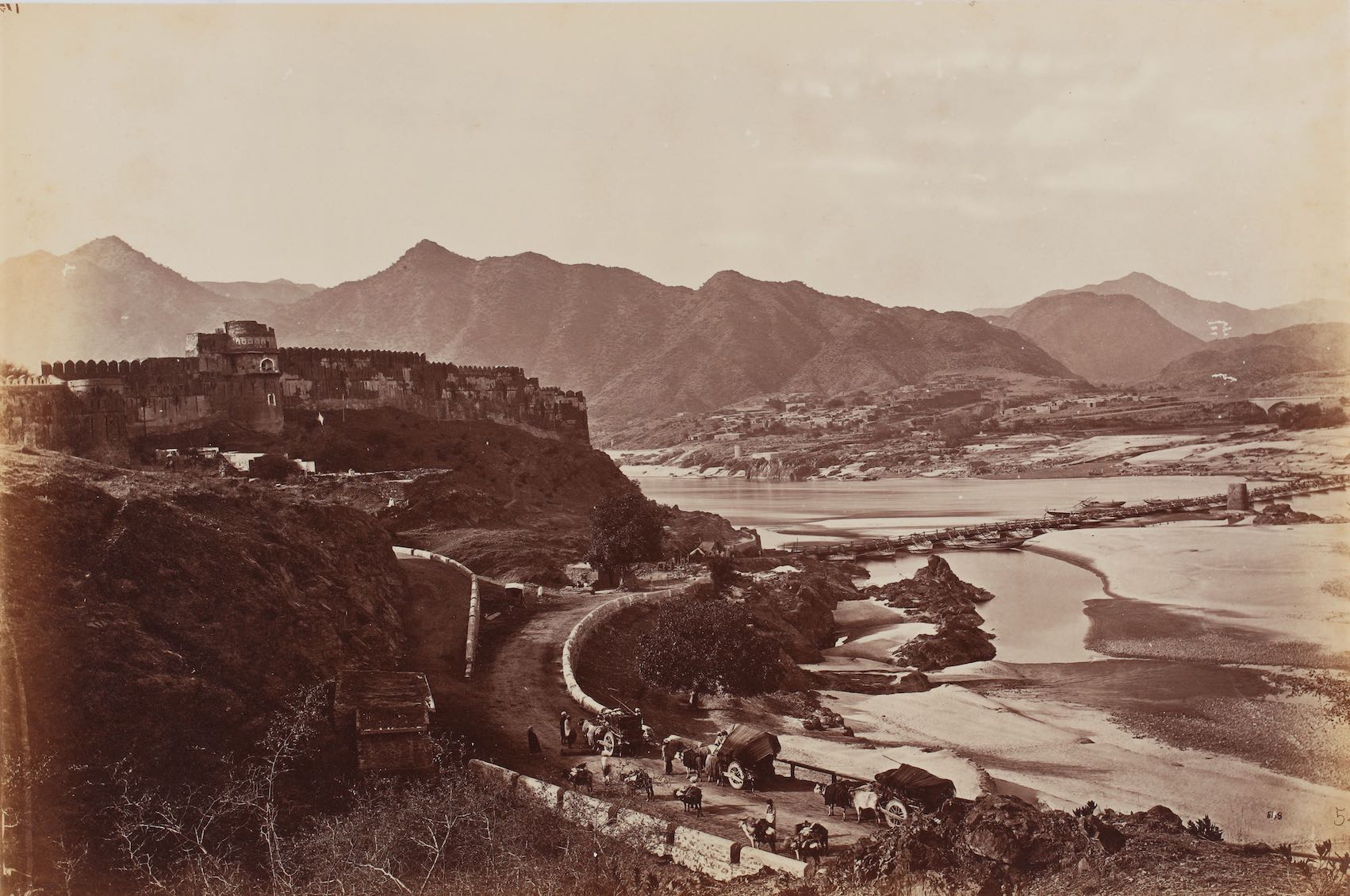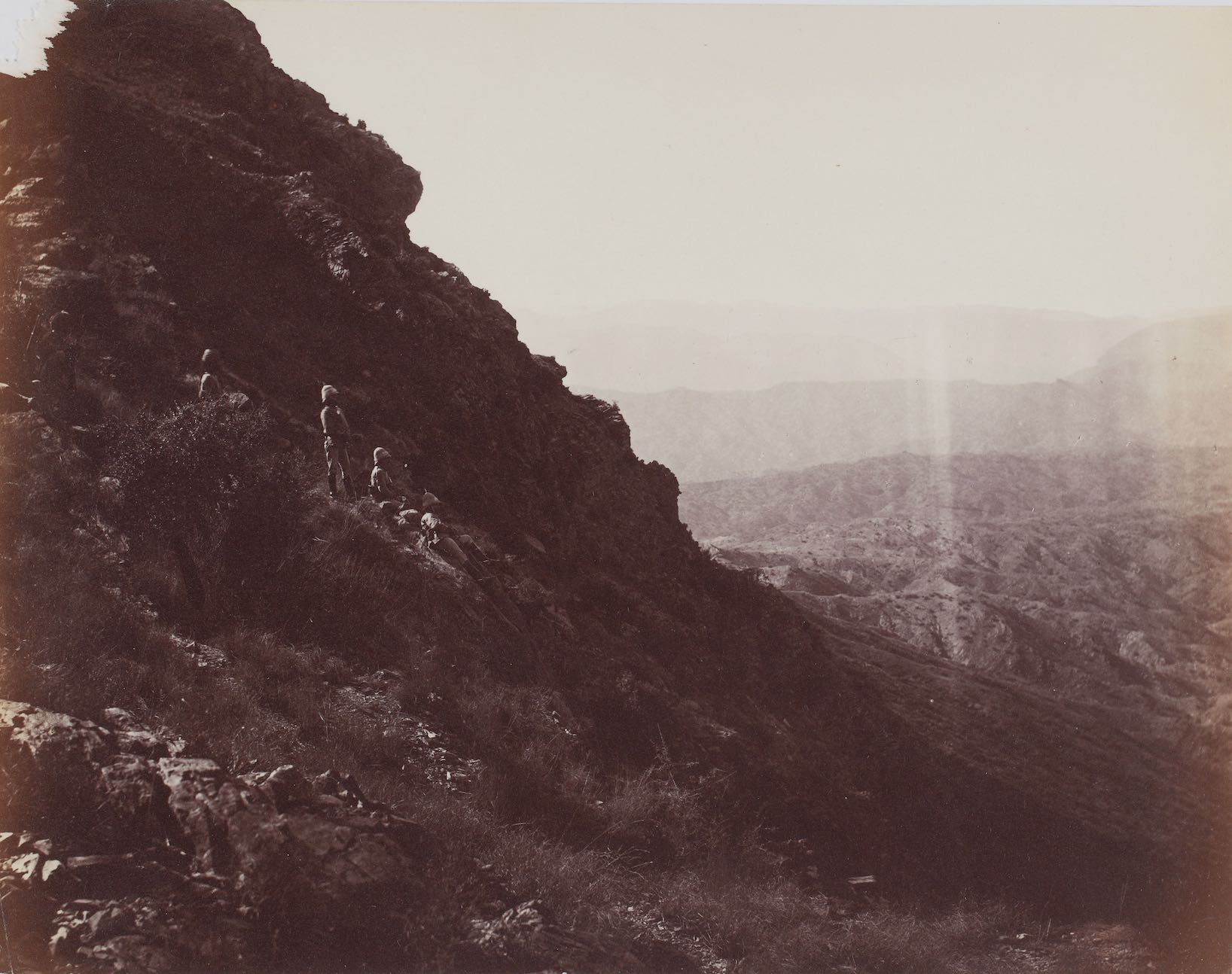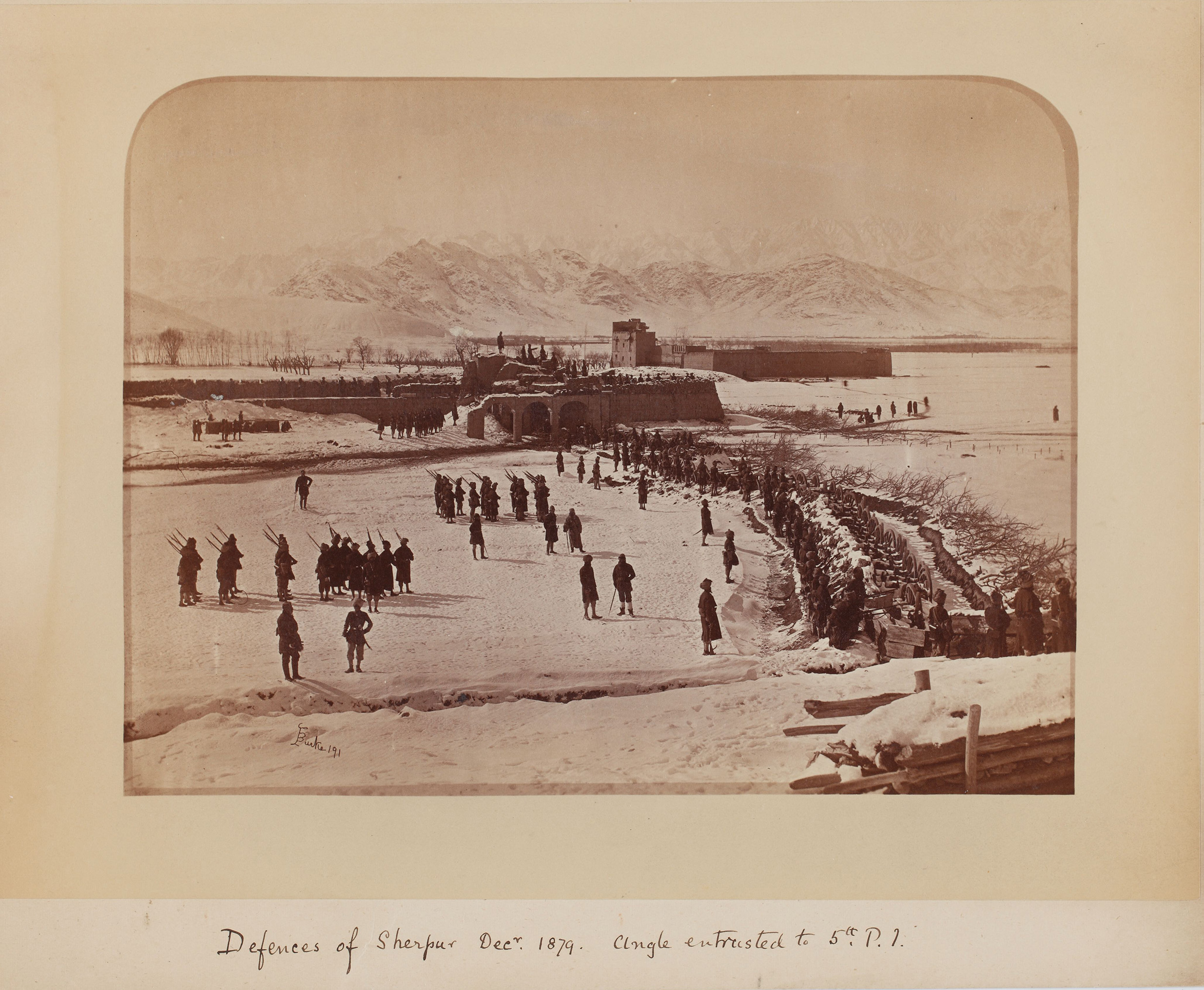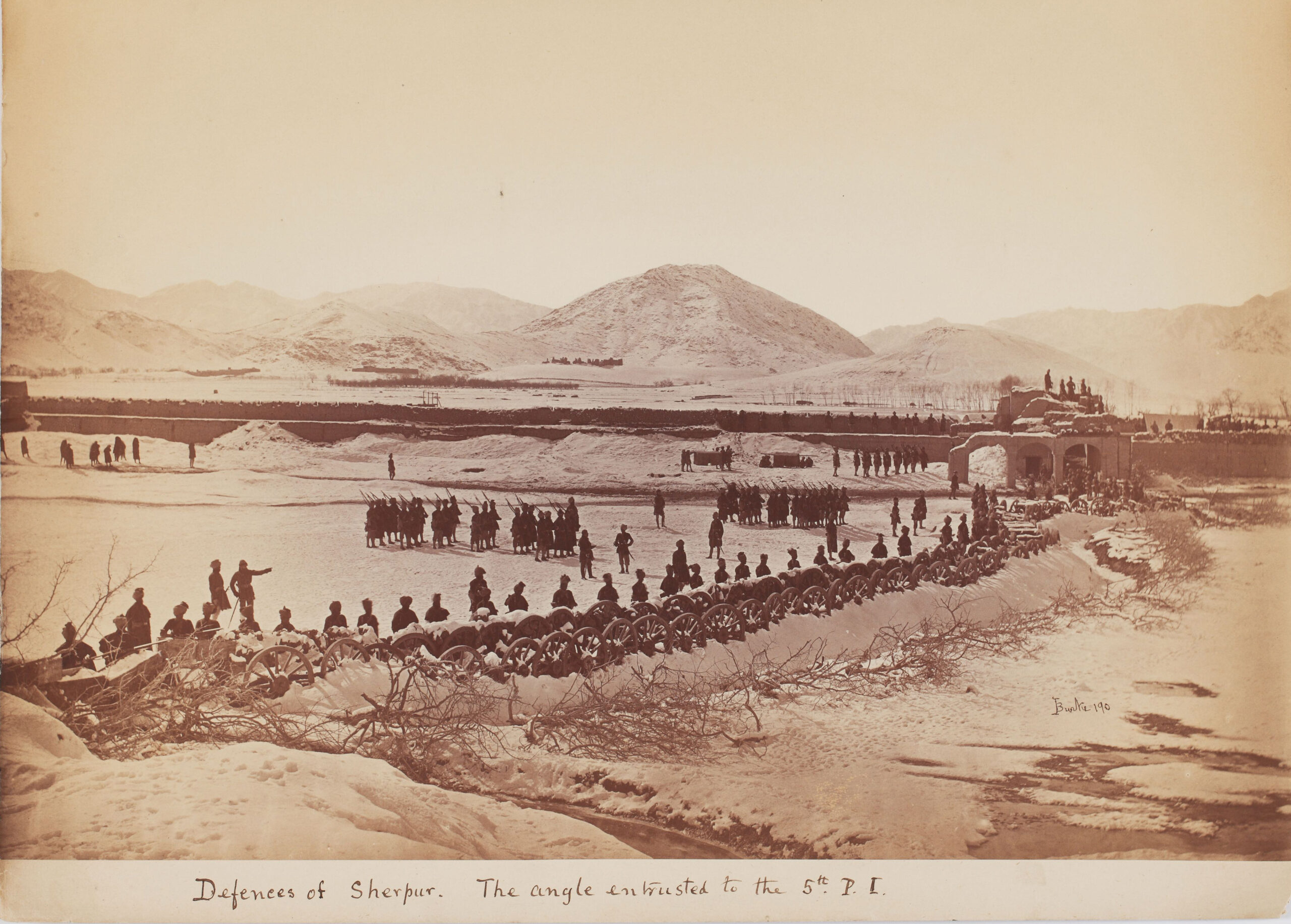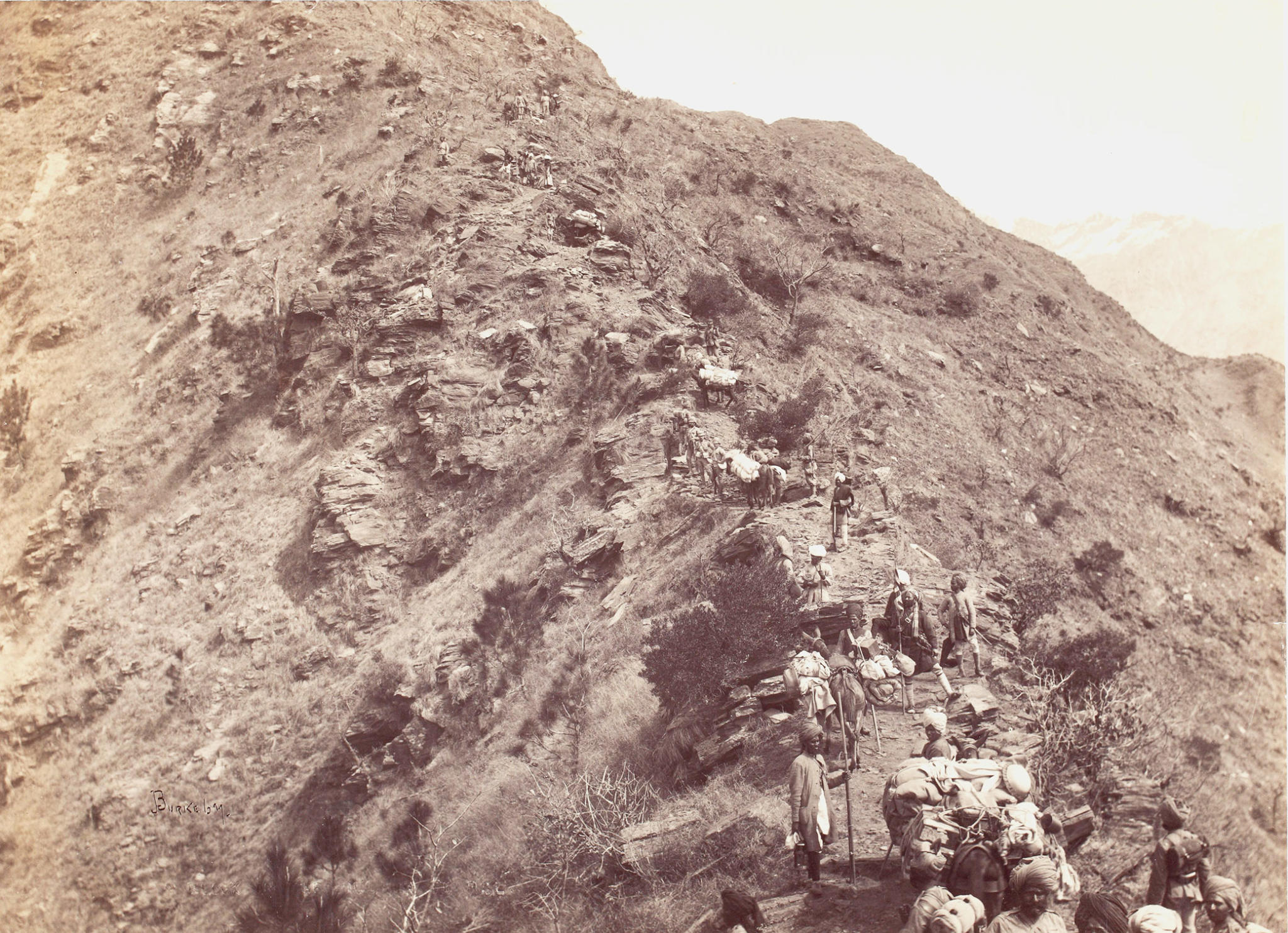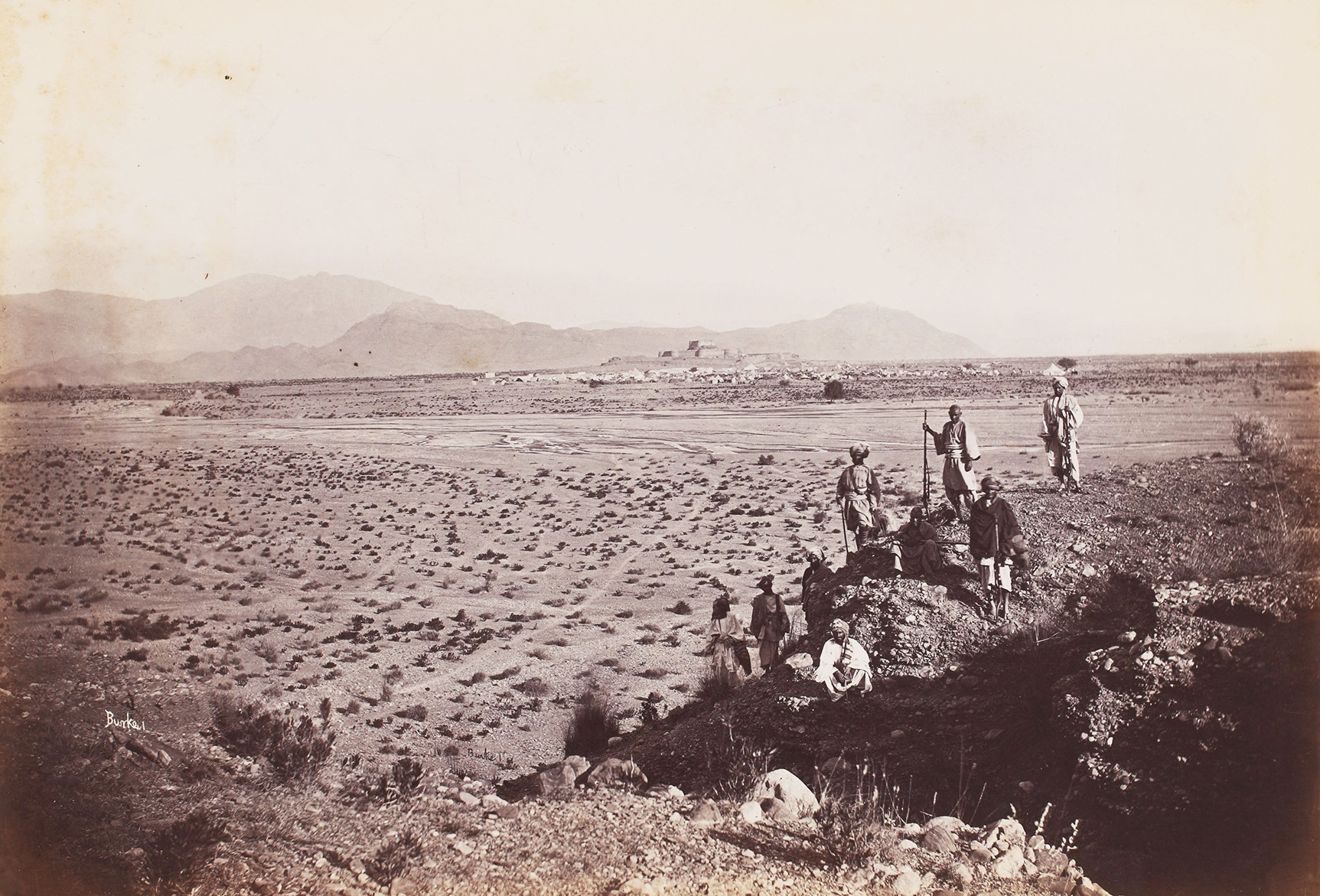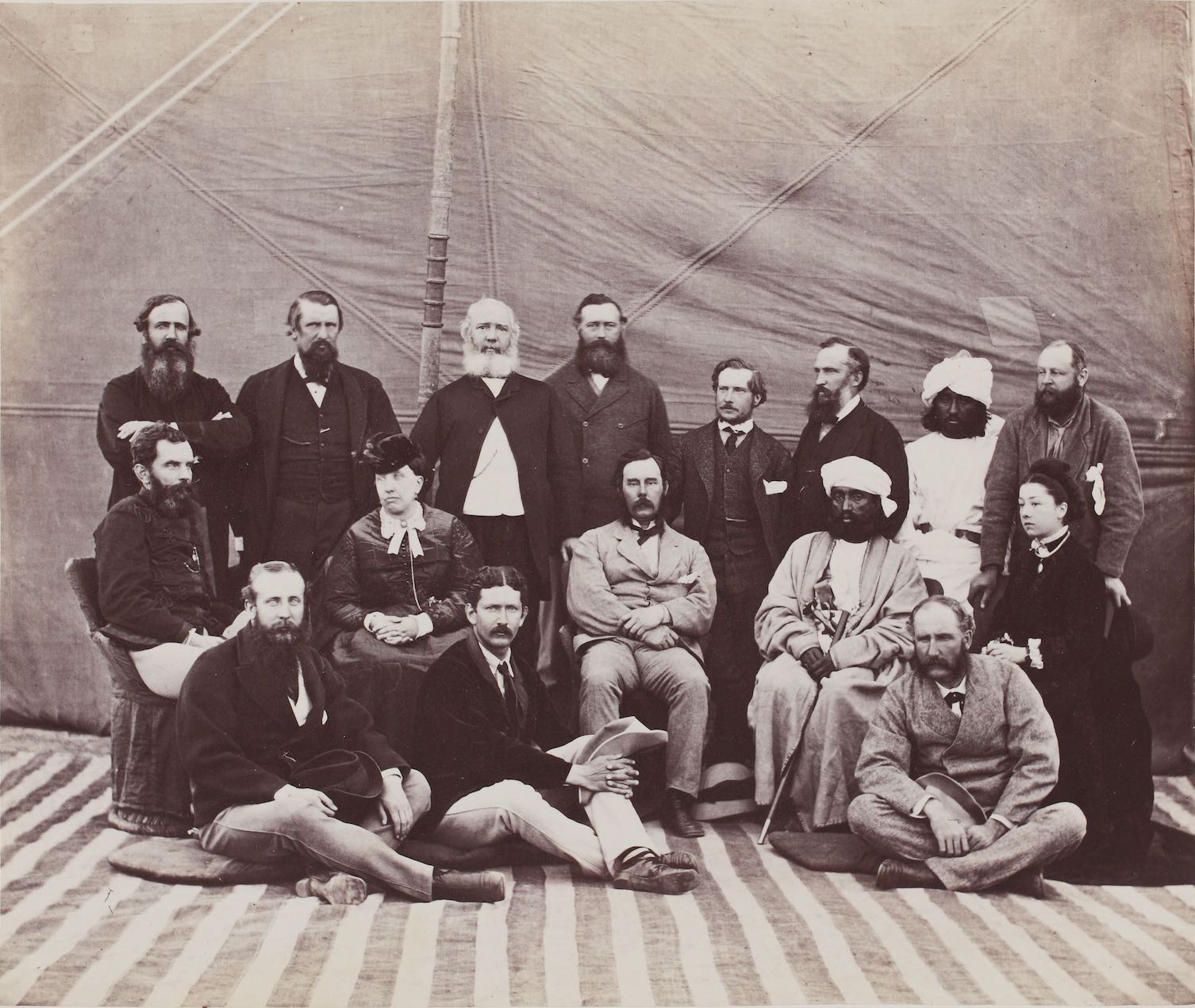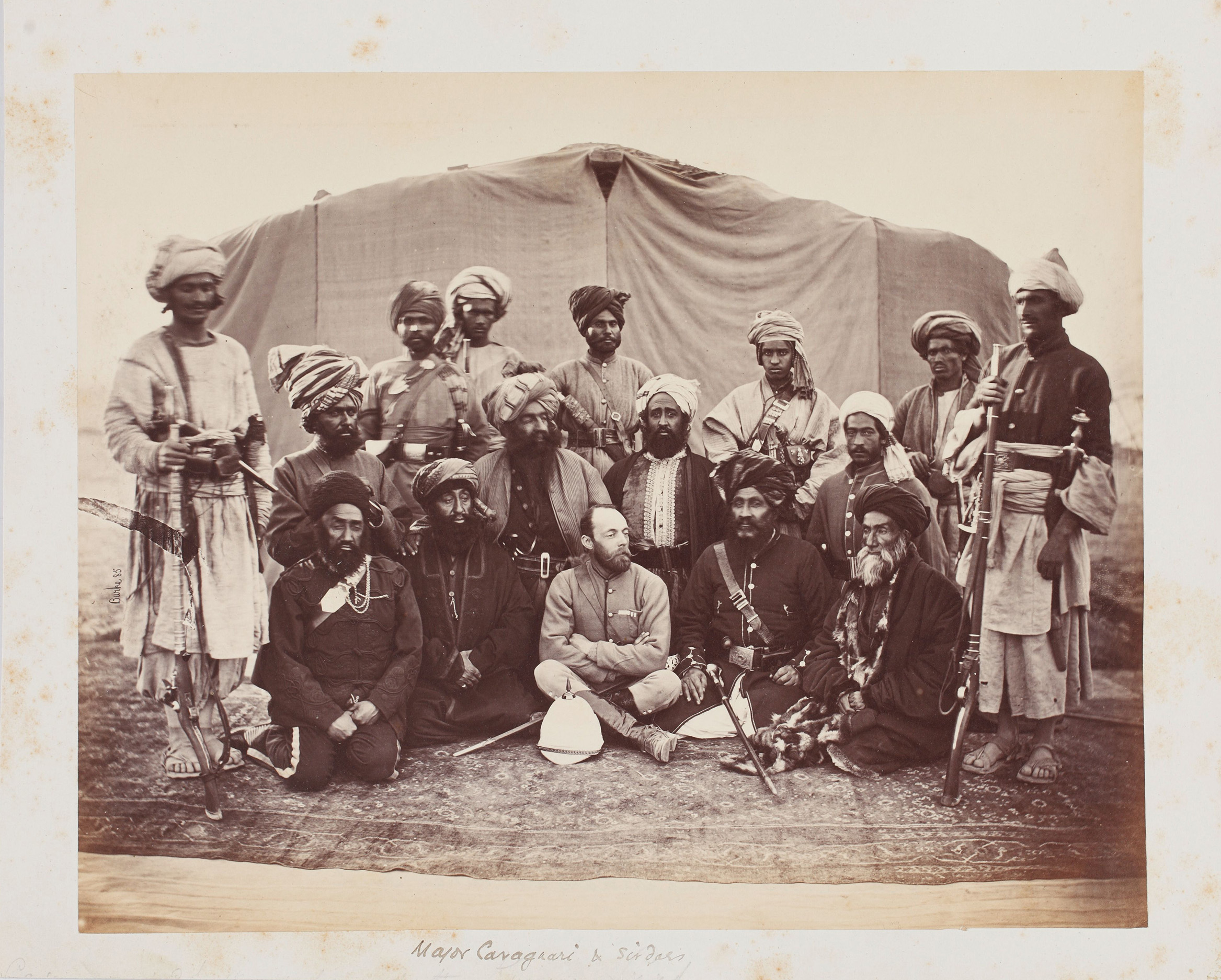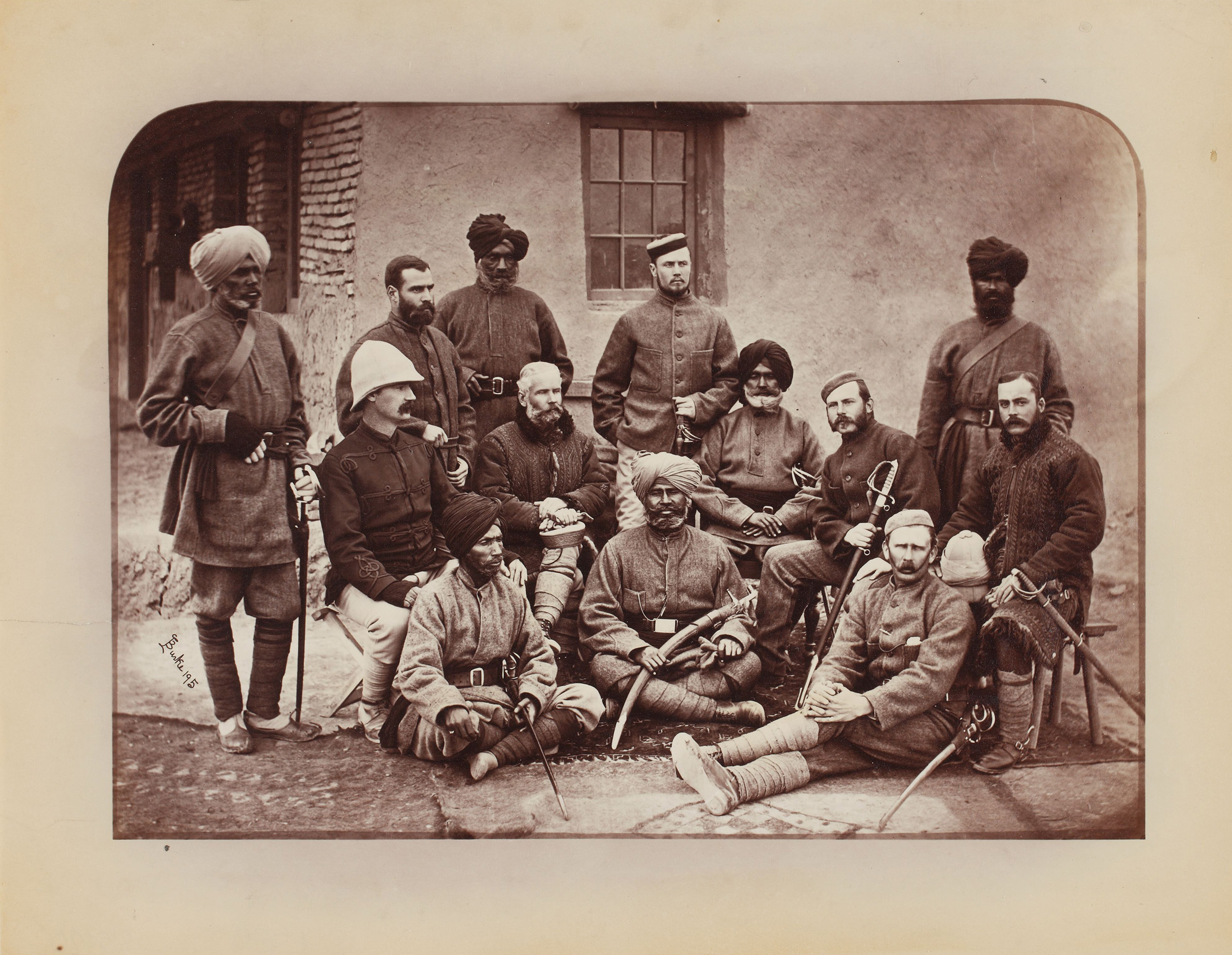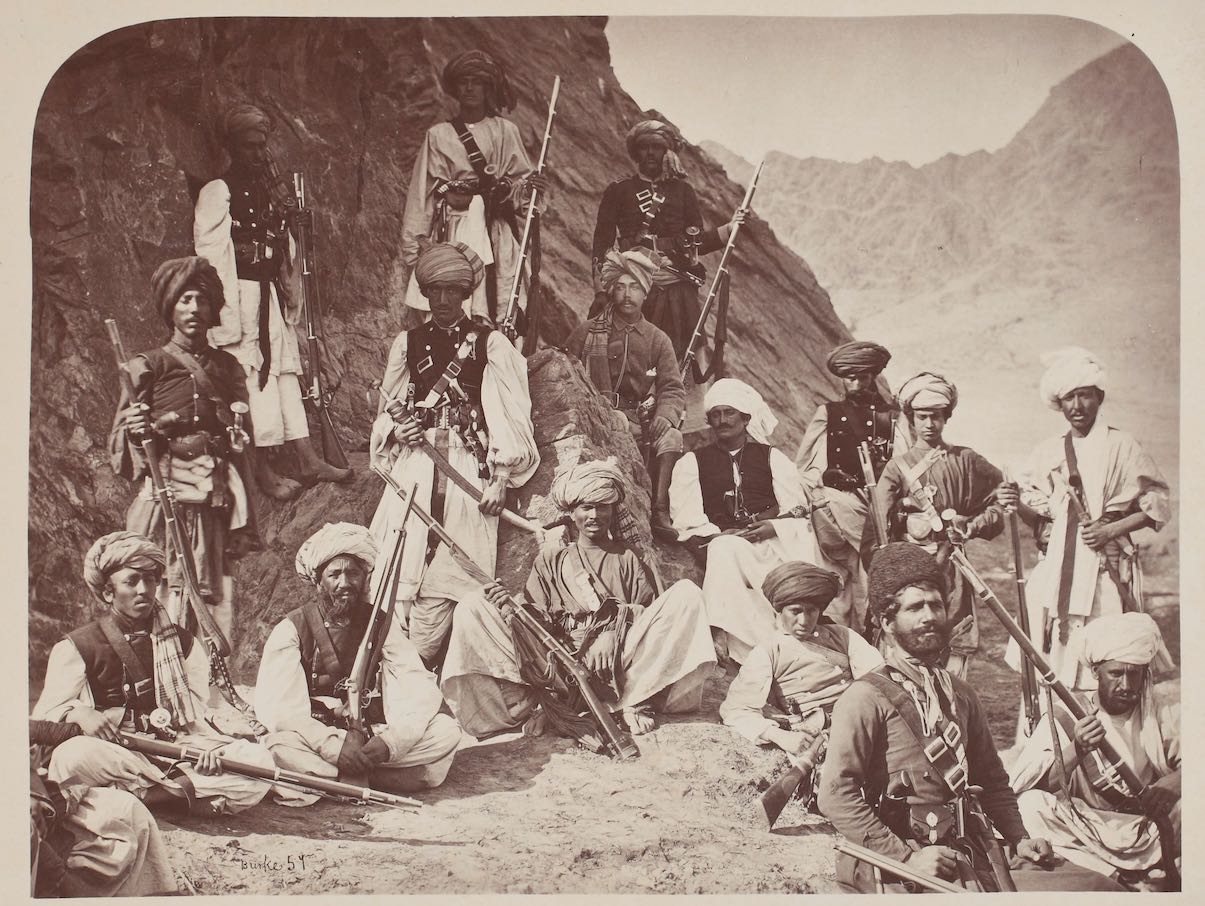One way to describe John Burke is as the unofficial-official photographer of the Second Anglo-Afghan War. The Irishman took what are arguably the first ever photographs of Afghanistan when he covered the conflicts of 1878-80. But he wasn’t employed by the British army; his application to cover the war had, in fact, been rejected.
Burke’s life story is something of a swashbuckler. As a child, he accompanied his father to India—they were likely the only ones in the family to survive Ireland’s Great Famine. When he was 17, he got a job as an assistant apothecary with the Royal Artillery in Peshawar. This early training held him in good stead when he teamed up with a Sergeant William Baker to run a photography firm in 1861. In those days, photography looked a lot like alchemy and a grasp of chemistry was a definite advantage for any ‘photographist’.
Baker and Burke rode the photo boom of the last 19th Century and opened studios in Murree and Peshawar in present-day Pakistan. Burke found success as a commercial photographer, documenting the landscapes and monuments of undivided Punjab and Kashmir for British officers. When Britain went to war with the Emirate of Afghanistan in 1878, Burke was in the right place at the right time. Or so he thought.
Perhaps due to a bias against his Irish heritage or working class background, John Burke’s application to be the official photographer of the Second Anglo-Afghan War was rejected. Fortunately for the British Army—and for posterity—he packed his heavy camera equipment and set off for Kabul anyway. Burke knew there would be great demand for these photographs among people back in Britain, so he took a calculated risk and waded into the war zone.
Between November 1878 and October 1880, the British army in India fought a series of battles for geo-political control over Afghanistan. This conflict, later termed the Second Anglo-Afghan War, was part of Britain’s greater power struggle with Tsarist Russia. As Russia ventured further into Central Asia, the regions of present-day Afghanistan and Pakistan became a critical buffer zone between the two imperial forces. In 1878, the ruler of this kingdom, Emir Shīr ʿAlī Khan, refused entry to a diplomatic mission ordered by the Viceroy of India Robert Bulwer-Lytton. He responded by sending 40,000 soldiers to invade Kabul.
The armies of British India were largely made up of Indian soldiers; over 1 million Indians served in World War I, and over 2 million in WWII. The government even regarded certain Indian communities as being especially suited to military service. During the Second Anglo-Afghan War, a report by the Eden Commission for military reform stated that Punjab was “home of the most martial race of India”. So it’s not a big leap to say that many of the soldiers we see in John Burke’s snowy photos of Kabul were very far away from the green fields of Punjab.
Burke’s gamble paid off and his photographs of the War won him enduring respect. Interestingly, for a war photographer, his images don’t reflect any violence or destruction. They are, rather, highly atmospheric snapshots of a haunting, stark land. In 2010, photographer Simon Norfolk went to Kabul to follow in Burke’s footsteps. In an interview, Norfolk explained why the pioneering Irishman’s work was special: “Lots of Victorian photography leaves me cold; I'm afraid I struggle with the restrained, solid nature of it all. Burke’s work seems more lyrical, more emotional somehow. Burke is more complete as a photographer too; he’s great at landscapes, groups, single figures, military encampments, reportage, and even news events.”
The Second Anglo-Afghan War ended with the victory of the British and eventually, led to the formation in 1901 of the North-West Frontier Province. The glass plate negatives of John Burke’s photographs are all lost. Only the albumen prints he made remain, many of which are part of the Sarmaya collection. And thanks again to that early training in the lab, Burke’s photos retain a high degree of detail and clarity even a century-and-a-half later.
References
John Burke, biography by Madhavan Pillai
The Great Game and Afghanistan – The Library of Congress
Anglo-Afghan Wars – Encyclopaedia Britannica
How Punjab came to dominate the British Indian army
John Burke, photo-artist of the Raj – Taylor & Francis Online
About Photography in Afghanistan – Afghan Box Camera Project
In Conversation – Paul Lowe & Simon Norfolk

